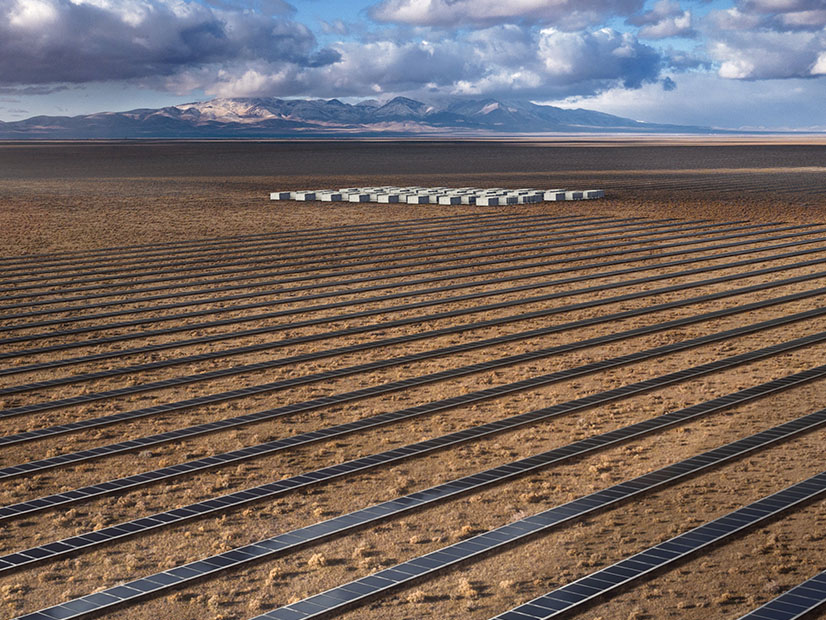
NV Energy has filed a proposal aimed at reducing Nevada’s dependence on the open energy market through the addition of geothermal resources, battery storage and a 440-MW, gas-fired peaker facility.
The plan proposes to postpone by either five or 10 years the retirement dates of several gas-fired units in both northern and southern Nevada. The proposal also addresses NV Energy’s removal from its energy portfolio of two solar-plus-storage projects that the company said have stalled because of supply chain issues.
The plan was filed last week with the Public Utilities Commission of Nevada (PUCN) as an amendment to the company’s 2021 integrated resource plan. A commission decision on the plan is expected by mid-May. But NV Energy is asking the PUCN to approve the Silverhawk peaking facility by March 10, so that operations can start by July 2024.
NV Energy said Nevada’s energy supply has faced challenges over the last three summers caused by energy shortfalls in California and increased competition for energy across the West. The company said the proposal is intended to “shield” its customers from the impacts of regulatory changes in California and resource adequacy challenges.
“Our plan will advance Nevada’s energy independence — ensuring reliable energy for our customers no matter how hot it gets across the western United States while also advancing our state’s sustainability and clean energy goals,” NV Energy CEO Doug Cannon said in a statement.
NV Energy’s push for Nevada’s “energy independence” comes as the state faces a 2030 deadline for its transmission providers to join an RTO as mandated by Senate Bill 448 of the state legislature’s 2021 session.
NV Energy has been participating in the RTO discussions. It is also a participant in the Western Markets Exploratory Group (WMEG), a stakeholder group that is discussing the design of two proposed day-ahead markets: CAISO’s extended day-ahead market and SPP’s Markets+. (See NV Energy Seeks Recovery of RTO-related Expenses.)
“Our filing aligns with our support of a regional transmission organization that will improve resource adequacy and improve reliability for our customers,” an NV Energy spokesperson told NetZero Insider.
Plan Components
NV Energy’s new proposed resource plan includes a 200-MW, grid-tied battery storage system on the site of the coal-fired Valmy Generating Station in Northern Nevada, which is slated for retirement by the end of 2025. The estimated cost for the battery storage is $466 million.
The Valmy battery storage would be a four-hour system, in contrast to the recently approved two-hour Reid Gardner battery storage system. Reid Gardner was designed to target the tip of summer net peak load, while Valmy will cover a broader portion of the peak, NV Energy said in its filing.
Another component of the plan is 440 MW of natural gas-fired combustion peaking turbines on the site of the Silverhawk Generating Station in southern Nevada. Silverhawk is a 520-MW, gas-fired power plant near Las Vegas.
NV Energy said in its filing that the Silverhawk peaking plant would be able to run on a 15% hydrogen fuel mix, with a potential for 100% hydrogen operation in the future.
The geothermal piece of the plan includes a 120-MW package of geothermal projects from Ormat and a 20-MW geothermal system from Eavor. The pricing for the geothermal energy would be $69/MWh for the Ormat portfolio and $70/MWh for the Eavor project — prices that NV Energy called “historically low” for a geothermal resource. For example, the Eavor price would be 28% lower than the last geothermal energy price that PUCN approved.
NV Energy’s proposal also includes transmission upgrades to accommodate the new energy resources.
Solar Projects Stalled
NV Energy received PUCN approval in January to purchase the Iron Point and Hot Pot solar-plus-storage projects from Primergy Solar. The projects — totaling 600 MW of solar and 480 MW of battery storage — were intended as replacement resources for the Valmy coal-fired plant.
But now, Iron Point and Hot Pot are “no longer expected to move forward as previously approved,” NV Energy said in its filing, blaming supply-chain issues.
“Due to the recent … price increases in the solar and energy storage market, [the developer] was unable to complete procurement on the schedule and at a price supporting that approved by the commission,” the filing said.
NV Energy said it is working with the developer to find ways that one or both projects could be delivered. Primergy didn’t immediately respond to a request for comment sent to the solar company’s publicist.


